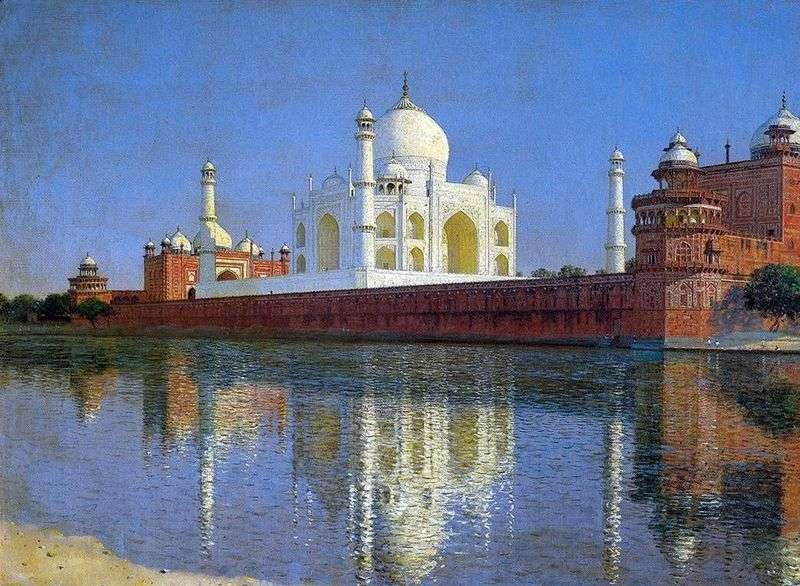
In 1874, Vereshchagin left Petersburg for a long journey through India. In landscapes written in India, the artist has shown himself a subtle sense of nature, the harmony of architectural forms. Especially great are the etudes “The Mausoleum of Taj Mahal in Agra”, “The Tomb of Sheikh Selim Chishti in Fatehpur-Sikri”, “Moti Masjid in Agra”. “Mausoleum Taj Mahal in Agra” – a true masterpiece of painting. Fascinated by the beauty of the temple, the artist with poetic inspiration conveys on the canvas all its splendor, the airiness of forms, the harmony of proportions, its connection with the surrounding space, the colorful extravaganza of the whole ensemble. Beautiful architecture, as in a mirror, is reflected in the smooth surface of the pond. It seems that the entire huge arsenal of pictorial means and techniques found here its most skillful application.
The Taj Mahal owes its glory not only to the beautiful architecture in which the grandeur and grace are strikingly combined, but also the romantic legend associated with it. The mausoleum was built in the 17th century by the ruler of the Great Mogul empire Shah Jahan in memory of his beloved wife, whose death plunged him into inconsolable grief. At the age of 15 Shah Jahan met and fell in love with Arjumand Banu Begam, the 14-year-old daughter of his father’s chief minister. It was a beautiful and intelligent girl of noble origin – in all respects a beautiful party for the prince, but, alas, he was waiting for a traditional political alliance with the Persian princess. Fortunately, the laws of Islam allow a man to have four wives, and in 1612 Shah Jahan married his lover.
The wedding ceremony could take place only with the favorable location of the stars. Therefore, Shah Jahan and his bride had to wait five years, during which they had never seen each other. Soon after the wedding, Arjumand received a new name – Mumtaz Mahal.
Beloved by the people, like a goddess, for mercy and sympathy and adored by her husband, she lived for seventeen years Mumtaz Mahal under the vigilant attention of the shah, who never left her one step. He consulted her in all matters and valued her judgments above her own. Great were also her modesty and devotion to her husband – she never parted with him and accompanied him even in difficult and dangerous military campaigns.
In 1630, when Mumtaz-Mahal accompanied Shah Jahan on a campaign against Khan Jahan-Lodi, she died during childbirth. Before her death, Mumtaz Mahal asked Shah Jahan to fulfill her two requests: not to marry again and build a mausoleum for her, who would not be equal in the world. And Shah Jahan solemnly swore to fulfill her desire. The mausoleum was called the “Crown of the Palace”, ie, in Persian “Taj-e-Mahal.”
The emperor himself took part in the creation of the project of the ensemble of the mausoleum. Shah Jahan was not only an educated architect – architecture was for him a favorite art form. His great love for the Mumtaz Mahal and the passionate desire to fulfill her death request as best as possible could not but make him take the closest part in the design of the vast complex of buildings that formed a single whole with the tomb itself. Who, if not he, could so vehemently wish to make the image of the Taj Mahal consonant with the bright image of the unforgettable Mumtaz Mahal and create not just a mausoleum, but a monument with architectural and artistic qualities really reminiscent of the spiritual virtues of the deceased.
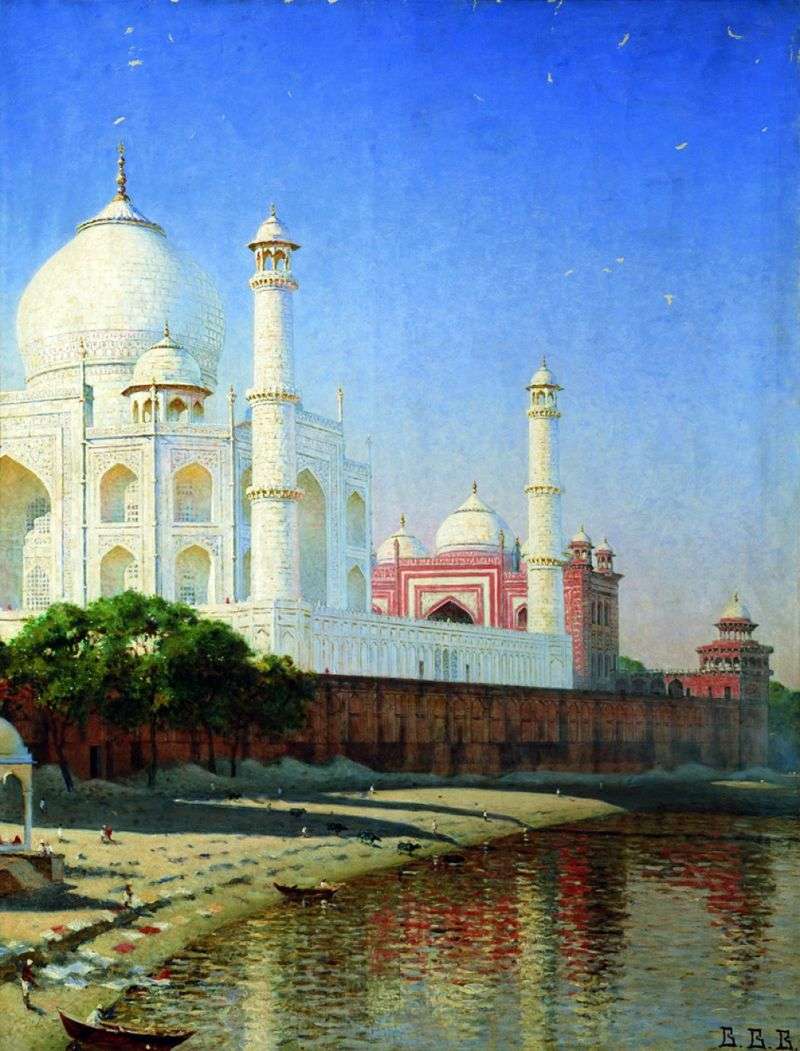 Mausoleum of the Taj Mahal by Vasily Vereshchagin
Mausoleum of the Taj Mahal by Vasily Vereshchagin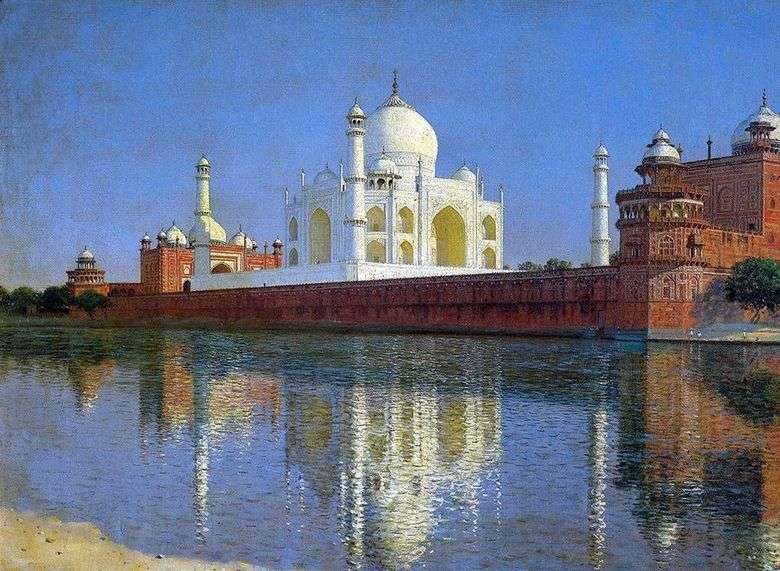 Mausoleo del Taj Mahal en Agra – Vasily Vereshchagin
Mausoleo del Taj Mahal en Agra – Vasily Vereshchagin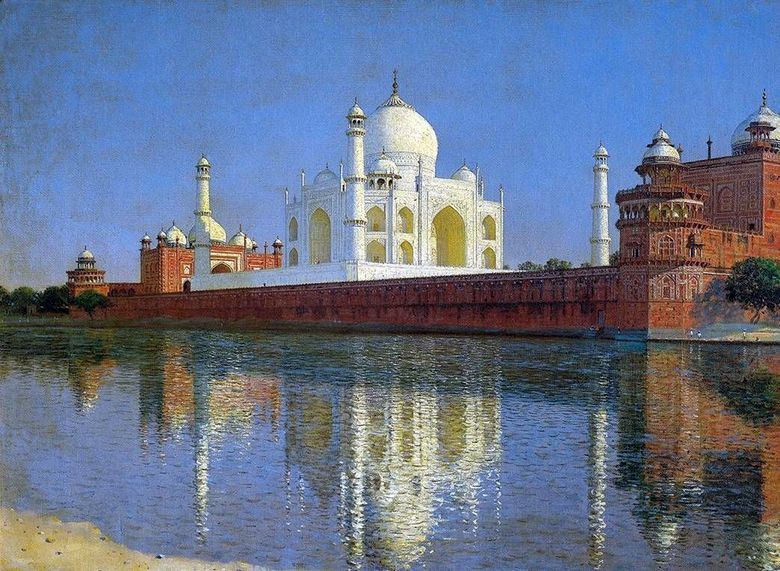 Mausolée du Taj Mahal à Agra – Vasily Vereshchagin
Mausolée du Taj Mahal à Agra – Vasily Vereshchagin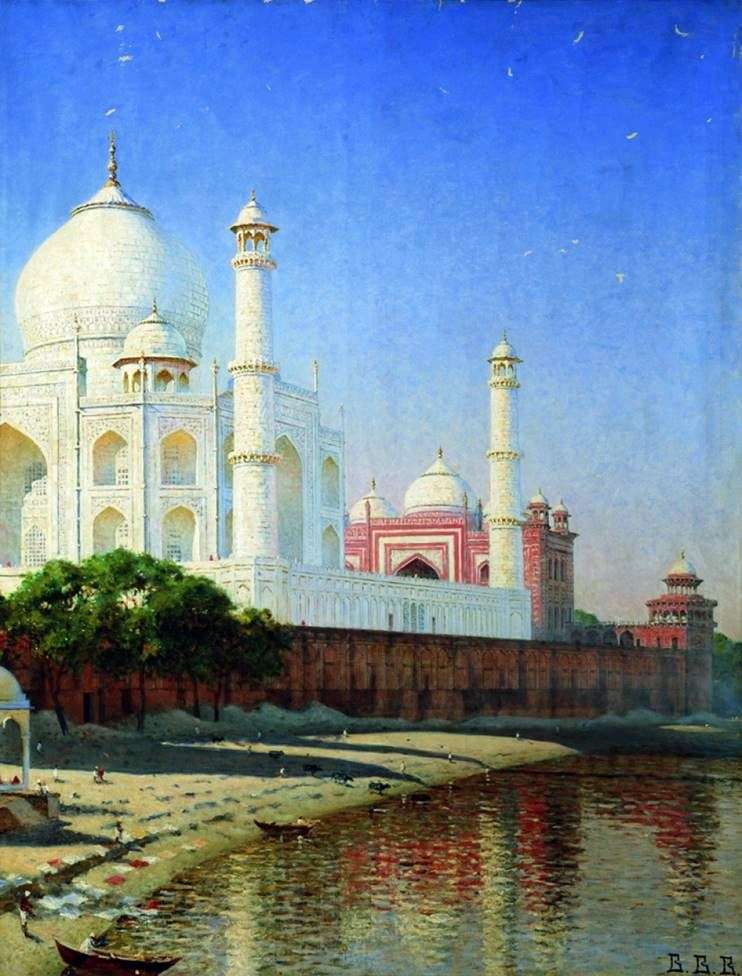 Mausoleo Taj Mahal – Vasily Vereshchagin
Mausoleo Taj Mahal – Vasily Vereshchagin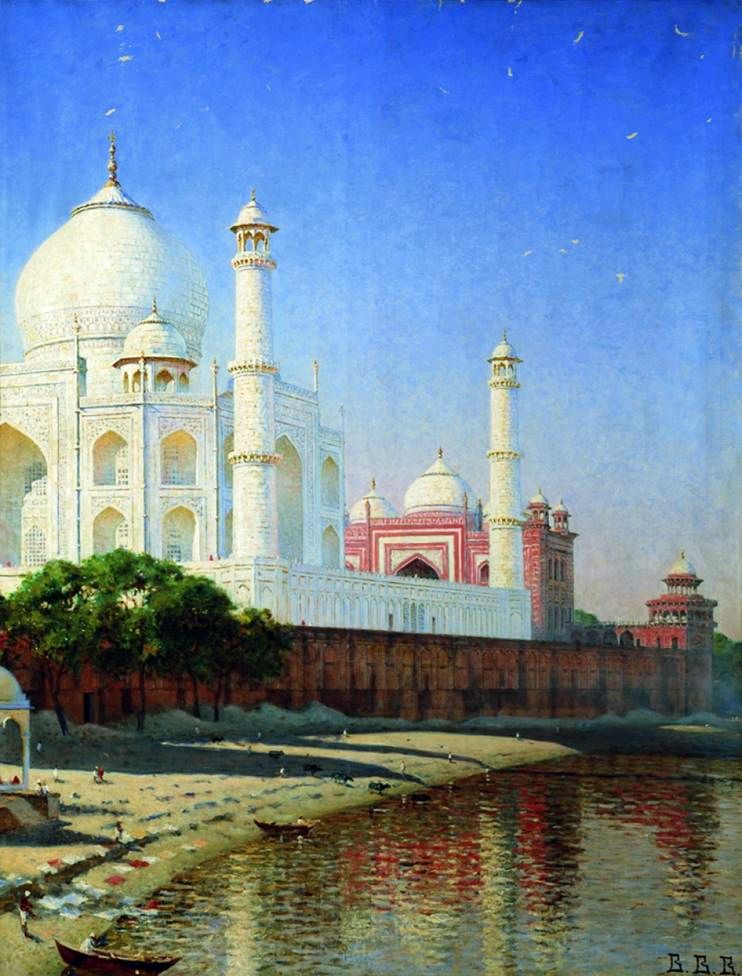 Mausolée du Taj Mahal – Vasily Vereshchagin
Mausolée du Taj Mahal – Vasily Vereshchagin Mountain stream in Kashmir by Vasily Vereshchagin
Mountain stream in Kashmir by Vasily Vereshchagin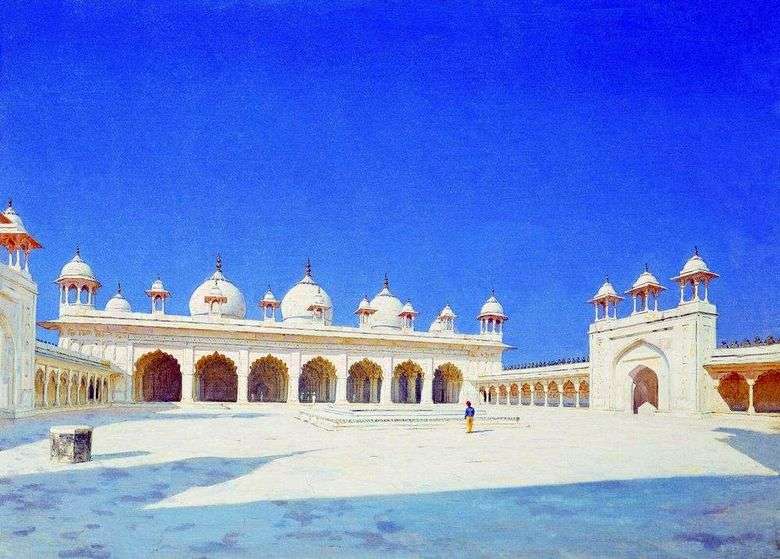 Moti Masjid (Mezquita de las Perlas) en Agra – Vasily Vereshchagin
Moti Masjid (Mezquita de las Perlas) en Agra – Vasily Vereshchagin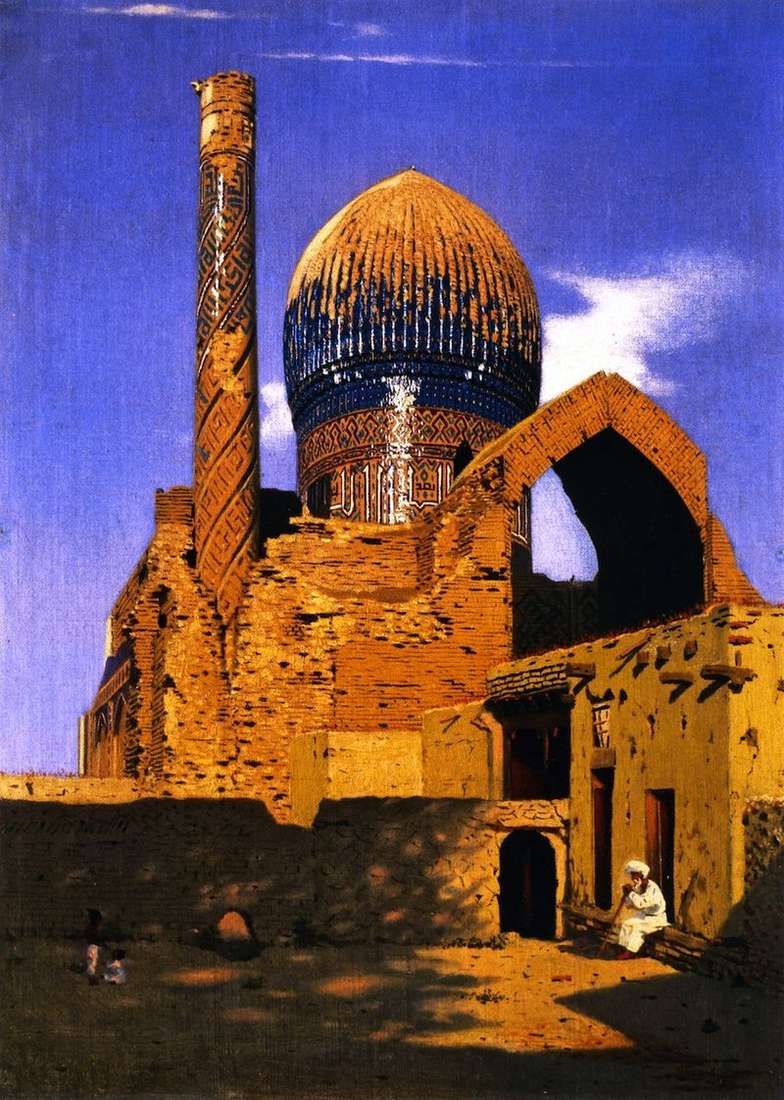 Mausoleum of Gur-Emir. Samarkand by Vasily Vereshchagin
Mausoleum of Gur-Emir. Samarkand by Vasily Vereshchagin